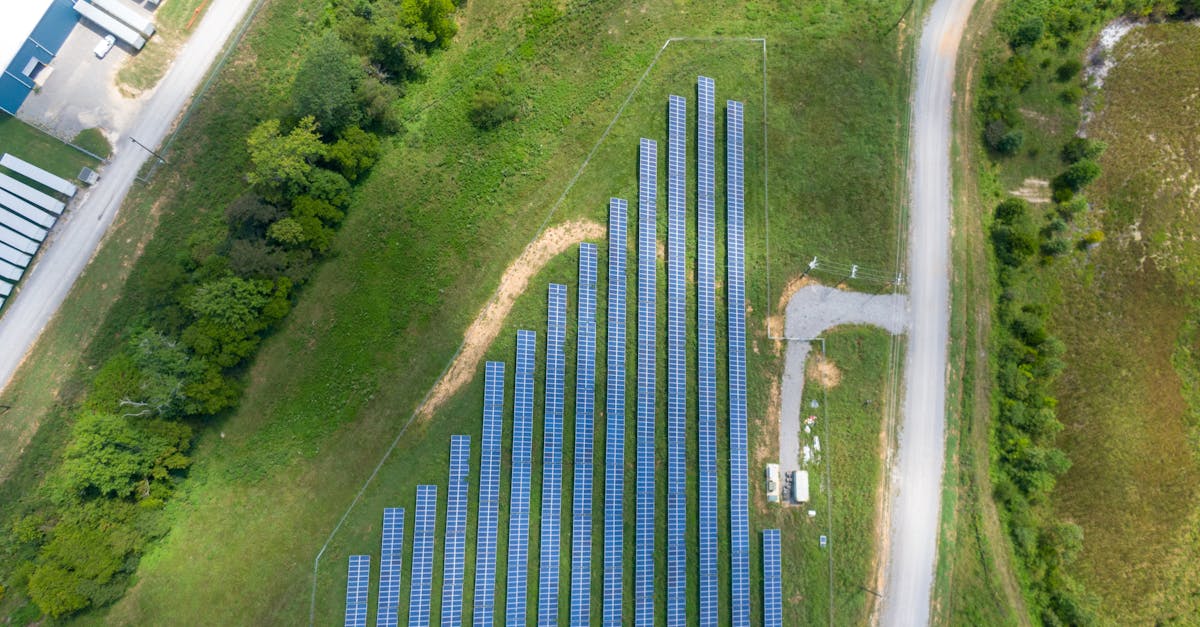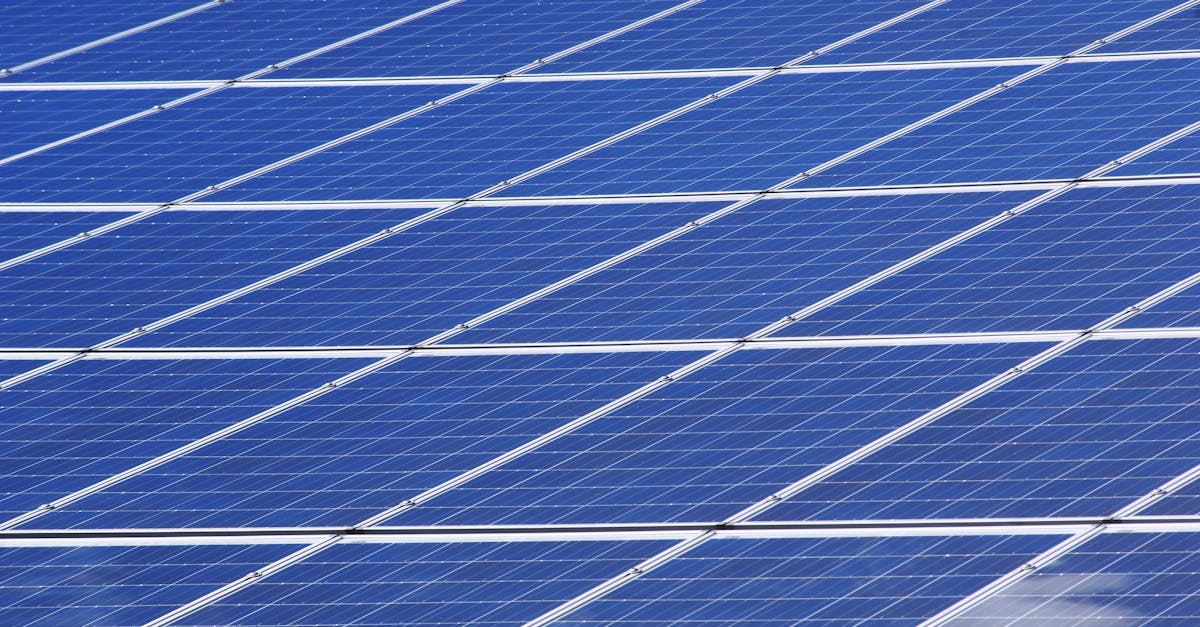Harnessing Sunlight for Sustainable Irrigation

In the face of pressing water scarcity and rising energy costs, solar powered pumps emerge as a beacon of hope for sustainable and efficient irrigation. Harnessing the boundless energy of the sun, these pumps offer a practical and cost-effective solution to meet the growing water demands of modern agriculture.
Dive into the world of solar powered irrigation and discover how this innovative technology is transforming the way we manage our most precious resource. From understanding the fundamentals of solar pumps to exploring the various types available, this comprehensive guide will equip you with all the knowledge you need to make informed decisions for your irrigation needs.
Thank you for reading this post, don't forget to subscribe!
Embark on a journey towards a greener, more sustainable future, where solar powered irrigation empowers farmers, conserves water, and paves the way for abundant harvests.
1. Harnessing the Power of the Sun
Let’s start our exploration by understanding how solar energy works. Photovoltaic (PV) cells, the heart of solar panels, are made of semiconductor materials that convert sunlight into electricity. When sunlight hits these cells, it knocks electrons loose, creating an electric current. The efficiency of PV cells, measured in percentage, determines how much of the sunlight they can convert into electricity.
In a solar powered irrigation system, the electricity generated by the solar panels is used to power a pump. Solar pumps are specially designed to operate on DC power, making them compatible with solar panels. The pump draws water from a source, such as a well or reservoir, and delivers it to the irrigation system.
Solar powered pumps offer numerous advantages. They are environmentally friendly, as they do not produce greenhouse gases or air pollution. They are also cost-effective in the long run, as they eliminate the need for expensive grid electricity or diesel fuel. With advancements in technology, solar panels and pumps have become more affordable and efficient, making solar powered irrigation a viable option for farmers and agricultural businesses.
Solar Energy Basics
Photovoltaic cells, the building blocks of solar panels, are made of semiconductor materials, such as silicon. When sunlight hits these cells, it knocks electrons loose, creating an electric current. The efficiency of PV cells, measured in percentage, determines how much of the sunlight they can convert into electricity.
Conversion efficiency is a crucial factor to consider when choosing solar panels. It represents the percentage of sunlight that the panel can convert into electricity. Higher efficiency means that the panel can generate more electricity for a given amount of sunlight.
Solar panels are made up of multiple PV cells connected together. The size and number of cells in a panel determine its power output. Solar panels are rated in watts (W) or kilowatts (kW), which indicates the amount of electricity they can generate under standard test conditions.
Solar Pump Components
Solar panels are the heart of a solar powered pump system, as they convert sunlight into electricity. Solar panels are made up of multiple photovoltaic (PV) cells connected together. The size and number of cells in a panel determine its power output.
Controllers play a vital role in regulating the flow of electricity from the solar panels to the pump. They ensure that the pump operates at the correct voltage and current, and they protect the system from damage in case of overvoltage or overcurrent.
Pumps are responsible for moving water from the source to the irrigation system. Solar powered pumps are specially designed to operate on DC power, making them compatible with solar panels. The type of pump used will depend on the specific requirements of the irrigation system, such as the flow rate and head height.
2. Efficiency in Irrigation

Solar powered pumps offer numerous advantages for irrigation, including water conservation and cost savings.
Water conservation is a major concern in many parts of the world, and solar powered pumps can help to reduce water usage. Solar pumps allow farmers to irrigate their fields even in remote areas where grid electricity is not available. This means that farmers can grow crops in areas that would otherwise be too dry for agriculture.
Cost savings are another major advantage of solar powered pumps. Solar pumps eliminate the need for expensive grid electricity or diesel fuel, which can save farmers a significant amount of money over time. Additionally, solar panels have a long lifespan of 25 years or more, which means that farmers can enjoy the benefits of solar power for many years to come.
Water Conservation
Solar powered pumps can help to reduce water wastage in several ways.
Firstly, solar pumps allow farmers to irrigate their fields even in remote areas where grid electricity is not available. This means that farmers can grow crops in areas that would otherwise be too dry for agriculture, reducing the need to clear new land for farming.
Secondly, solar pumps can be used to implement more efficient irrigation methods, such as drip irrigation or sprinkler irrigation. These methods deliver water directly to the roots of the plants, reducing evaporation and runoff.
Thirdly, solar pumps can be used to monitor soil moisture levels and adjust irrigation schedules accordingly. This helps to ensure that crops are getting the right amount of water they need, without wasting water.
Energy Efficiency
Solar powered pumps are a clean and renewable source of energy, which means that they do not produce greenhouse gases or air pollution. They also eliminate the need for expensive grid electricity or diesel fuel, which can save farmers a significant amount of money over time.
In addition to their environmental and financial benefits, solar powered pumps are also very efficient. Solar panels convert sunlight into electricity with an efficiency of around 20-30%. This means that a solar powered pump can generate a significant amount of electricity even in cloudy conditions.
Overall, solar powered pumps offer a number of advantages over traditional irrigation methods. They are clean, renewable, efficient, and cost-effective. As a result, solar powered pumps are becoming increasingly popular among farmers and agricultural businesses around the world.
Cost-Effectiveness
Solar powered pumps offer a number of long-term cost benefits compared to traditional irrigation methods.
Firstly, solar powered pumps eliminate the need for expensive grid electricity or diesel fuel. This can save farmers a significant amount of money over time, especially in areas where electricity costs are high.
Secondly, solar panels have a long lifespan of 25 years or more. This means that farmers can enjoy the benefits of solar power for many years to come, without having to worry about replacing their equipment.
Thirdly, solar powered pumps require minimal maintenance. This can save farmers time and money in the long run.
Overall, solar powered pumps are a cost-effective solution for irrigation. They can save farmers money on energy costs, maintenance costs, and replacement costs.
3. Types of Solar Powered Pumps
There are three main types of solar powered pumps: submersible pumps, surface pumps, and hybrid solar pumps.
Submersible pumps are designed to be submerged in water, making them ideal for deep wells. They are typically used for high-flow applications, such as irrigating large fields or orchards.
Surface pumps are placed on the surface of the water, making them ideal for shallow wells or ponds. They are typically used for low-flow applications, such as watering gardens or livestock.
Hybrid solar pumps combine solar power with grid power or battery backup. This makes them a good choice for areas with unreliable sunlight or for applications that require a constant water supply.
When choosing a solar powered pump, it is important to consider the following factors:
- Flow rate: The flow rate of a pump is measured in gallons per minute (GPM) or liters per minute (LPM). It is important to choose a pump with a flow rate that is sufficient for your irrigation needs.
- Head height: The head height of a pump is the vertical distance that the water must be pumped. It is important to choose a pump with a head height that is sufficient for your irrigation system.
- Efficiency: The efficiency of a pump is measured in percentage. It is important to choose a pump with a high efficiency rating to get the most out of your solar power system.
Submersible Pumps
Submersible pumps are a type of solar powered pump that is designed to be submerged in water. This makes them ideal for deep wells, as they can be placed directly in the water without the need for a long suction pipe.
Submersible pumps are typically used for high-flow applications, such as irrigating large fields or orchards. They are also used in a variety of other applications, such as water supply, wastewater treatment, and groundwater remediation.
When choosing a submersible pump, it is important to consider the following factors:
- Flow rate: The flow rate of a pump is measured in gallons per minute (GPM) or liters per minute (LPM). It is important to choose a pump with a flow rate that is sufficient for your irrigation needs.
- Head height: The head height of a pump is the vertical distance that the water must be pumped. It is important to choose a pump with a head height that is sufficient for your irrigation system.
- Efficiency: The efficiency of a pump is measured in percentage. It is important to choose a pump with a high efficiency rating to get the most out of your solar power system.
Surface Pumps
Surface pumps are a type of solar powered pump that is placed on the surface of the water. This makes them ideal for shallow wells or ponds, as they do not need to be submerged in water to operate.
Surface pumps are typically used for low-flow applications, such as watering gardens or livestock. They are also used in a variety of other applications, such as water transfer, drainage, and pressure boosting.
When choosing a surface pump, it is important to consider the following factors:
- Flow rate: The flow rate of a pump is measured in gallons per minute (GPM) or liters per minute (LPM). It is important to choose a pump with a flow rate that is sufficient for your irrigation needs.
- Head height: The head height of a pump is the vertical distance that the water must be pumped. It is important to choose a pump with a head height that is sufficient for your irrigation system.
- Efficiency: The efficiency of a pump is measured in percentage. It is important to choose a pump with a high efficiency rating to get the most out of your solar power system.
Hybrid Solar Pumps
Hybrid solar pumps combine solar power with grid power or battery backup. This makes them a good choice for areas with unreliable sunlight or for applications that require a constant water supply.
Hybrid solar pumps are typically used for high-flow applications, such as irrigating large fields or orchards. They are also used in a variety of other applications, such as water supply, wastewater treatment, and groundwater remediation.
When choosing a hybrid solar pump, it is important to consider the following factors:
- Flow rate: The flow rate of a pump is measured in gallons per minute (GPM) or liters per minute (LPM). It is important to choose a pump with a flow rate that is sufficient for your irrigation needs.
- Head height: The head height of a pump is the vertical distance that the water must be pumped. It is important to choose a pump with a head height that is sufficient for your irrigation system.
- Efficiency: The efficiency of a pump is measured in percentage. It is important to choose a pump with a high efficiency rating to get the most out of your solar power system.
4. Planning Your Solar Pump System

Planning and sizing a solar powered pump system is an important step to ensure that you have a system that meets your water needs and budget.
Step 1: Determine your water requirements. This includes considering the amount of water you need for irrigation, livestock, or other purposes. You will also need to consider the time of year when you will need the most water.
Step 2: Choose the right pump. The type of pump you choose will depend on your water requirements and the depth of your well or water source. You will also need to consider the flow rate and head height of the pump.
Step 3: Size your solar panels. The size of your solar panels will depend on the amount of sunlight you receive in your area and the power consumption of your pump. You will also need to consider the efficiency of your solar panels.
Calculating Water Requirements
Calculating your water requirements is an important step in planning and sizing a solar powered pump system. The amount of water you need will depend on a number of factors, including:
- Crop type: Different crops have different water needs. For example, corn requires more water than soybeans.
- Irrigation method: The irrigation method you use will also affect your water needs. Drip irrigation is more efficient than flood irrigation, so you will need less water if you use drip irrigation.
- Climatic conditions: The climate in your area will also affect your water needs. If you live in a hot, dry climate, you will need to water your crops more often than if you live in a cool, humid climate.
Once you have considered all of these factors, you can use the following formula to calculate your water requirements:
Water requirements = Crop water use × Irrigated area
Crop water use is the amount of water that a crop needs to grow. You can find crop water use data for your area from your local extension office or from online resources.
Irrigated area is the area of land that you are irrigating.
Sizing Solar Panels and Pumps
The size of your solar panels and pump will depend on a number of factors, including:
- Water requirements: The amount of water you need will determine the size of your pump.
- Sunlight availability: The amount of sunlight you receive in your area will determine the size of your solar panels.
- Pump efficiency: The efficiency of your pump will also affect the size of your solar panels.
- Solar panel efficiency: The efficiency of your solar panels will also affect the size of your solar panels.
Once you have considered all of these factors, you can use the following formula to calculate the size of your solar panels:
Solar panel size (kW) = Pump power (W) × Pump operating hours per day (h) × Safety factor (1.25)
The safety factor is used to account for inefficiencies in the system and to ensure that you have enough power to run your pump even on cloudy days.
You can use a similar formula to calculate the size of your pump:
Pump power (W) = Water flow rate (L/min) × Head height (m) × Specific gravity of water (1)
The specific gravity of water is a measure of the density of water. It is typically equal to 1.
Battery Storage Considerations
Batteries can be used to store excess solar energy for night-time or cloudy weather operation. This can be important if you want to ensure that you have a reliable water supply even when the sun is not shining.
The size of the battery bank you need will depend on a number of factors, including:
- Water requirements: The amount of water you need will determine the size of your battery bank.
- Sunlight availability: The amount of sunlight you receive in your area will determine how much excess solar energy you can store in your battery bank.
- Pump efficiency: The efficiency of your pump will also affect the size of your battery bank.
- Solar panel efficiency: The efficiency of your solar panels will also affect the size of your battery bank.
Once you have considered all of these factors, you can use the following formula to calculate the size of your battery bank:
Battery capacity (Ah) = Pump power (W) × Pump operating hours per day (h) × Days of autonomy (d) × Safety factor (1.25)
The days of autonomy is the number of days that you want your battery bank to be able to power your pump without sunlight.
The safety factor is used to account for inefficiencies in the system and to ensure that you have enough power to run your pump even on cloudy days.
5. Maintenance and Troubleshooting
Regular maintenance and troubleshooting are essential to ensure optimal performance of your solar powered pump system.
Maintenance
- Clean your solar panels regularly. Dirt and debris can build up on your solar panels over time, which can reduce their efficiency. It is important to clean your solar panels regularly with a soft cloth and mild soap.
- Inspect your pump regularly. Look for any signs of wear or damage. If you find any problems, contact a qualified technician for repairs.
- Change your pump oil regularly. The oil in your pump should be changed according to the manufacturer’s recommendations. Using old or dirty oil can damage your pump.
Troubleshooting
- My pump is not running. Check the following:
- Make sure that the solar panels are connected to the pump.
- Make sure that the solar panels are facing the sun and that there is no debris blocking them.
- Check the fuses and circuit breakers.
- If you have a battery bank, check the battery connections and make sure that the batteries are charged.
- My pump is running but it is not pumping water. Check the following:
- Make sure that the pump is submerged in water.
- Make sure that the intake screen is not clogged.
- Check the head height of the pump. The head height is the vertical distance that the water must be pumped. If the head height is too high, the pump may not be able to pump water.
- My pump is making a noise. Check the following:
- Make sure that the pump is properly lubricated.
- Make sure that there are no loose parts in the pump.
Regular Maintenance
Regular maintenance is essential to prolong the lifespan of your solar powered pump system. Here are a few preventive maintenance measures that you can take:
- Clean your solar panels regularly. Dirt and debris can build up on your solar panels over time, which can reduce their efficiency. It is important to clean your solar panels regularly with a soft cloth and mild soap.
- Inspect your pump regularly. Look for any signs of wear or damage. If you find any problems, contact a qualified technician for repairs.
- Change your pump oil regularly. The oil in your pump should be changed according to the manufacturer’s recommendations. Using old or dirty oil can damage your pump.
- Check your battery connections regularly. If you have a battery bank, it is important to check the battery connections regularly to make sure that they are tight and clean. Loose or dirty battery connections can reduce the efficiency of your battery bank.
- Monitor your system’s performance. It is a good idea to monitor your system’s performance on a regular basis. This will help you to identify any problems early on and take steps to correct them.
Troubleshooting Common Issues
Even with regular maintenance, your solar powered pump system may experience problems from time to time. Here are a few simple troubleshooting steps that you can take to address common problems and optimize system performance:
- My pump is not running. Check the following:
- Make sure that the solar panels are connected to the pump.
- Make sure that the solar panels are facing the sun and that there is no debris blocking them.
- Check the fuses and circuit breakers.
- If you have a battery bank, check the battery connections and make sure that the batteries are charged.
- My pump is running but it is not pumping water. Check the following:
- Make sure that the pump is submerged in water.
- Make sure that the intake screen is not clogged.
- Check the head height of the pump. The head height is the vertical distance that the water must be pumped. If the head height is too high, the pump may not be able to pump water.
- My pump is making a noise. Check the following:
- Make sure that the pump is properly lubricated.
- Make sure that there are no loose parts in the pump.
If you are unable to resolve the problem yourself, you should contact a qualified technician for help.
6. Government Incentives and Support
Governments around the world are offering a variety of incentives and support programs to encourage the adoption of solar powered irrigation systems. These incentives can help to reduce the upfront cost of installing a solar powered irrigation system, making it more affordable for farmers and businesses.
Financial assistance
One of the most common types of government incentives is financial assistance. This can come in the form of grants, rebates, or tax credits. Grants are typically awarded to farmers and businesses that install solar powered irrigation systems. Rebates are payments that are made to farmers and businesses after they have installed a solar powered irrigation system. Tax credits are deductions that can be taken on taxes owed to the government.
Technical support
In addition to financial assistance, governments also offer a variety of technical support programs to help farmers and businesses install and maintain solar powered irrigation systems. These programs can provide farmers and businesses with training, technical assistance, and access to experts in the field of solar energy.
**Government incentives and support programs are a valuable resource for farmers and businesses that are considering installing a solar powered irrigation system. These programs can help to reduce the upfront cost of installing a solar powered irrigation system and provide farmers and businesses with the technical support they need to install and maintain their systems.
Financial Assistance
Financial assistance is one of the most common types of government incentives for solar powered pumps. This can come in the form of grants, rebates, or tax credits.
Grants are typically awarded to farmers and businesses that install solar powered pumps. Grants do not have to be repaid.
Rebates are payments that are made to farmers and businesses after they have installed a solar powered pump. Rebates are typically a percentage of the cost of the solar powered pump system.
Tax credits are deductions that can be taken on taxes owed to the government. Tax credits are typically a percentage of the cost of the solar powered pump system.
The availability of financial assistance for solar powered pumps varies from country to country. In the United States, for example, the federal government offers a 30% tax credit for the installation of solar powered pumps. Many states also offer financial incentives for solar powered pumps.
To find out what financial assistance is available in your area, you can contact your local government or visit the Database of State Incentives for Renewables & Efficiency (DSIRE).
Technical Support
Technical support is another valuable resource for farmers who are considering installing solar powered irrigation systems. This can come in the form of extension programs and technical assistance services.
Extension programs provide farmers with training, technical assistance, and access to experts in the field of solar energy. Extension programs are typically offered by universities and government agencies.
Technical assistance services can provide farmers with help with the design, installation, and maintenance of solar powered irrigation systems. Technical assistance services are typically offered by private companies.
The availability of technical support for solar powered irrigation systems varies from country to country. In the United States, for example, the USDA offers a variety of extension programs and technical assistance services for solar powered irrigation systems. Many states also offer technical support for solar powered irrigation systems.
To find out what technical support is available in your area, you can contact your local government or visit the Database of State Incentives for Renewables & Efficiency (DSIRE).
7. The Future of Solar Powered Irrigation
The future of solar powered irrigation is bright. Advancements in technology and increased adoption are making solar powered irrigation more affordable and accessible than ever before.
Advancements in technology
One of the most exciting advancements in solar powered irrigation is the development of more efficient solar panels. Solar panels are becoming more efficient at converting sunlight into electricity, which means that solar powered irrigation systems can generate more power with less land.
Another advancement in solar powered irrigation is the development of more durable and reliable pumps. Solar powered pumps are now designed to withstand harsh weather conditions and operate for many years with minimal maintenance.
Increased adoption
The adoption of solar powered irrigation is also increasing around the world. Farmers are realizing the benefits of solar powered irrigation, such as reduced operating costs, increased crop yields, and reduced environmental impact.
Governments are also supporting the adoption of solar powered irrigation. Many governments offer financial incentives for solar powered irrigation systems. These incentives can help to reduce the upfront cost of installing a solar powered irrigation system.
Overall, the future of solar powered irrigation is bright. Advancements in technology and increased adoption are making solar powered irrigation more affordable and accessible than ever before.
Emerging Technologies
Ongoing developments in solar cell efficiency, pump design, and monitoring systems are making solar powered irrigation systems more efficient, reliable, and affordable.
Solar cell efficiency
Researchers are constantly developing new ways to improve the efficiency of solar cells. Solar cell efficiency is the percentage of sunlight that a solar cell can convert into electricity. The higher the solar cell efficiency, the more electricity a solar powered irrigation system can generate.
Pump design
Researchers are also developing new pump designs that are more efficient and reliable. Solar powered pumps are now designed to withstand harsh weather conditions and operate for many years with minimal maintenance.
Monitoring systems
Monitoring systems can help farmers to track the performance of their solar powered irrigation systems. Monitoring systems can collect data on factors such as solar radiation, pump flow rate, and water pressure. This data can help farmers to identify problems early on and take steps to correct them.
These are just a few of the emerging technologies that are making solar powered irrigation more efficient, reliable, and affordable. As these technologies continue to develop, solar powered irrigation will become an even more attractive option for farmers around the world.
Increased Adoption
The adoption of solar powered irrigation is increasing around the world, driven by a number of factors, including:
- Reduced operating costs: Solar powered irrigation systems can help farmers to reduce their operating costs. Solar power is a free and renewable resource, so farmers do not have to pay for fuel to operate their pumps.
- Increased crop yields: Solar powered irrigation systems can help farmers to increase their crop yields. Solar powered irrigation systems can provide farmers with a reliable source of water, even during droughts.
- Reduced environmental impact: Solar powered irrigation systems have a reduced environmental impact compared to traditional irrigation systems. Solar power is a clean and renewable resource, so solar powered irrigation systems do not produce greenhouse gases.
The increased adoption of solar powered irrigation is having a positive impact on sustainable agriculture. Solar powered irrigation systems are helping farmers to reduce their operating costs, increase their crop yields, and reduce their environmental impact.
What are the benefits of using solar powered pumps for irrigation?
Solar powered pumps offer a number of benefits for irrigation, including reduced operating costs, increased crop yields, and reduced environmental impact.
What are the different types of solar powered pumps?
There are three main types of solar powered pumps: submersible pumps, surface pumps, and hybrid solar pumps.
How do I choose the right solar powered pump for my needs?
When choosing a solar powered pump, it is important to consider factors such as flow rate, head height, and efficiency.
How do I maintain a solar powered pump system?
Regular maintenance is essential to prolong the lifespan of your solar powered pump system. This includes cleaning your solar panels regularly, inspecting your pump regularly, and changing your pump oil regularly.
What are the government incentives available for solar powered pumps?
Governments around the world offer a variety of incentives for solar powered pumps, including financial assistance and technical support.
Quiz
1. True or False: Solar powered pumps can only be used for irrigating small fields.
**2. Which type of solar powered pump is designed to be submerged in water?
(a) Submersible pump (b) Surface pump (c) Hybrid solar pump
**3. What is the most important factor to consider when choosing a solar powered pump?
(a) Price (b) Brand (c) Flow rate
**4. How can you prolong the lifespan of your solar powered pump system?
(a) Clean your solar panels regularly (b) Inspect your pump regularly (c) Change your pump oil regularly (d) All of the above
**5. What is one of the benefits of using solar powered pumps for irrigation?
(a) Reduced operating costs (b) Increased crop yields (c) Reduced environmental impact (d) All of the above
Answer Key
- False
- (a) Submersible pump
- (c) Flow rate
- (d) All of the above
- (d) All of the above




